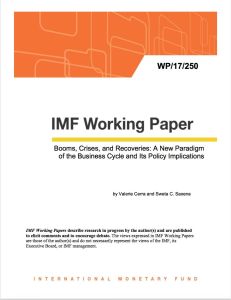Join getAbstract to access the summary!

Join getAbstract to access the summary!
Valerie Cerra and Sweta C. Saxena
Booms, Crises, and Recoveries
A New Paradigm of the Business Cycle and Its Policy Implications
IMF, 2017
What's inside?
Lagging economic growth after the Great Recession may simply have been par for the course.
Recommendation
For economists, sluggish growth in the United States and around the globe following the Great Recession seemed a bit confusing. After all, the prevailing wisdom was that rapid growth and labor gains in the recovery would subsequently offset GDP contractions and high unemployment. The reality, however, was quite different. IMF professionals Valerie Cerra and Sweta C. Saxena posit that the output gaps seen in this recovery were quite normal and that the business cycle is not all that cyclical. getAbstract recommends this robust but technical report to economists and analysts.
Summary
About the Authors
Valerie Cerra and Sweta C. Saxena are International Monetary Fund professionals.

















Comment on this summary